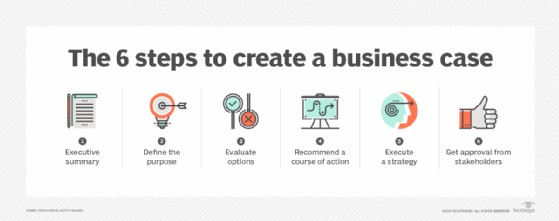7 tips for better HR software selection
Finding the right software isn't just a one-stop shop. Organizations need to follow the right strategy before determining which HR software best fits their company.
In many aspects of business, following the right strategy is the key to testing assumptions, learning and uncovering the truth. In the HR software selection process -- where it's easy to fall prey to hype and empty promises -- following the best strategy is critical.
Here are seven tips for making a better HR software selection.
1. Start with the right team
Setting up the right buying team is crucial for selecting the right software.
Depending on the type of software, this can include HR representatives, as well as IT and cross-departmental representatives, such as finance and security. Each member brings an important perspective on how the technology will fit within the ecosystem, what the ROI will be and what user experience elements are most important.
The HR software market offers applications for every aspect of an employee's lifecycle. This includes recruiting, onboarding, document management, self-service, compensation planning, performance management, succession planning, reporting and analytics. The offerings might vary significantly from one vendor to another in terms of features and functionality, price and service. Therefore, it's important that the buying team has a good understanding of their requirements before meeting with vendors.
A representative HR software buying team helps ensure that the right questions are asked to determine whether the technology being considered meets the organization's needs.
2. Adopt a people-centric perspective
Considering the technology first is not a good starting point. Instead, focus on the user.
The new HR system must be user-friendly and offer enough benefits that employees and the HR team will want to use it. Ignoring the user experience can quickly undermine the rollout of a new system or necessitate damage control while issues are being resolved. Additionally, once employees have a negative experience with an application, it's challenging to change their perspective.
Here are some questions to ask:
- Is the software inviting and easy to use for potential candidates, which in turn helps the recruitment team build a pipeline of qualified candidates?
- Can the software effectively help recruit and hire people in a particular region by using the correct language, job titles and descriptions, advertising appeals, benefit offerings and considerations unique to the area's people and cultures?
- Can the company use the software to pay people in the right currency and in the most accepted methods for that area?
- Can the software scale to cultural considerations specific to the area?
By matching a vendor's product features with the organization's requirements, which aim to meet a specific business objective, the buying team can select an HR software vendor and product that best meet the company's needs. However, it isn't always that simple.
It's essential to consider that adopting a people-centric approach often entails trade-offs, even when the best interests of employees are at the forefront. For example, opting for a single large system might provide all the necessary functionality, but some of its features could be inferior to those of niche applications on the market. For example, an HRMS vendor could offer a recruitment module as part of its product, but it might not provide all the features that a niche vendor in that market would offer. In these situations, the buying team must weigh the benefits of a consistent user interface offered by the HRMS vendor versus the benefits of a best-in-class application offered by a third party.
3. Focus on implementation questions
Another important aspect of an HR software selection is how the implementation process will affect the company.
"It's all about asking the questions that really clarify what you're looking for in a software product and figuring out … how you're going to implement and use it," said Brian Westfall, a former principal HR analyst at Gartner.
Some key questions to ask include:
- What is the organization's budget?
- Who is on the implementation team, both internally and from the vendor?
- What are the responsibilities of the implementation team members?
- How does the organization define success?
- Is the company prepared for the implementation?
- Who will maintain the technology after go-live?
In other words, ask what measurements will determine whether the technology implementation is a success or failure, Westfall said.
Without clear metrics, the organization won't know if it made the right decision or needs to start the process over.
For example, completing the implementation on budget and in the preferred timeline, but delivering a product that doesn't meet the company's requirements, isn't a success. Similarly, delivering a product that's significantly over budget or delayed isn't a success.
4. Uncover features and functionality
Asking questions about the software itself is essential for any software assessment.
Initial conversations with vendors will often focus on high-level fit and responses to critical questions, such as budget and confirmation that the vendor can meet mandatory requirements. As the conversations continue and move to demos, the buying team should validate that the software meets the organization's requirements and that the user interface is appealing, which in turn will make the software easier to use. Other items to discuss include confirming the vendor has experience with customers in the same industry and of a similar size and complexity.
Here are some in-depth questions to ask to learn more about product design:
- Were the modules in the software suite developed from a common architecture or added through acquisition?
- To what extent is the software configurable to meet the organization's needs?
- What are the vendor's plans for ongoing development?
- What services are provided for ongoing software support?
Be sure to ask if the software is customizable to the company's needs, said Trevor White, vice president of advisory and consulting at Nucleus Research, a market research and advisory firm.
If so, ask if there is a charge for customizing the software and to what extent it can be customized. For example, does the software enable customers to expand on existing features or add new ones, or is customization limited to the configuration options provided to system administrators?
A salesperson might hide details about extra fees and potential problems behind a broad, generic answer. Ask for specific details to cover all areas of concern. This includes requesting references and other use documentation.
"Ask about any case studies, as they can tell you a lot about the legitimacy of a product," Westfall said.
5. Push past the marketing to get answers
Once the organization has established its needs and narrowed down its choices, the team should pivot to ask probing questions about the usability and longevity of specific HR software products.
Drill down to the vendor's core competencies to better understand the product focus, scalability and performance, said Lisa Rowan, research vice president of HR software and services at IDC.
Some questions to ask the vendor include:
- What is the average tenure of its customer service team?
- What do clients say they wish they had done differently after adopting the vendor's software? What was the biggest lesson they learned?
- What is the vendor's largest client in terms of full-time equivalents (FTEs), a universal employee workload measurement, and what is their smallest client in terms of FTEs?
- What is the average number of FTEs of all their clients?
- What industries are most prevalent among their clients, and are there particular industries in which they have a larger share of the market?
Push past the marketing speak and get definitive answers to all these questions to ensure the organization selects the best product for its needs.
Vagueness is the ultimate red flag when evaluating software vendors, Westfall said. It's essential to understand exactly how these products work and how they can contribute to the company's goals.
6. Include key stakeholders in the process
Key stakeholders should be involved throughout the process, since they bring different perspectives. Even after the HR system is implemented, key stakeholders continue to play an important role as the system undergoes enhancements and changes to meet the company's evolving needs.
Here is a list of key stakeholders to consider:
- HR.
- IT.
- Finance.
- Payroll.
- Security.
- CEO, especially in smaller companies.
- Executive management.
- Learning and development.
- Representation from departments that will be directly affected. For example, someone from the distribution center might be a key stakeholder if new employee time tracking is being introduced.
- An HR system specialist, such as an external consultant.
- Employee and manager representatives.

The project starts with building the business case, and it's critical to get stakeholder feedback and, more importantly, buy-in for the project from its inception. These types of endeavors can be expensive, disrupt employees across the organization and potentially delay other projects.
Stakeholders bring a unique perspective to requirements gathering, can share feedback on vendor information and demonstrations, and can help sell the new HR system internally throughout the selection and implementation process. Their support becomes even more important when issues arise, such as the need for additional funds or resources.
7. Control the demonstration
The product demonstration is one of the most important steps in the HR software selection process. It's the buying team's opportunity to see the application in action and ask questions specific to the organization's needs, including those related to the vendor.
Don't let the vendor do a canned demonstration that only highlights the positive aspects of its HR system. The leader of the buying team should work with each vendor, telling them what they must demonstrate and which specific examples to include. Also, ensure that enough time is allocated when evaluating a comprehensive system. For example, reviewing software in half a day that is intended to support an entire employee's lifecycle isn't feasible. In such situations, a full day or more might be needed.
Here are some tips for the demo:
- Include the buying team, key members of the HR team and stakeholders in the demo.
- Make sure everyone taking part in the demo has been briefed about the vendor and software before the meeting, so they don't waste time asking questions that have already been resolved.
- Work with the vendor to set a schedule, then stick to it as closely as possible.
- Allow ample time for questions and answers.
- Avoid spending too much time on items that aren't important, such as a feature that's interesting but isn't high on the requirements list.
- Tell each person attending the demo that they're expected to provide feedback post-demo.
- Consider holding a post-demo meeting with those who attended the demo so everyone can share detailed feedback.
- Follow up with each vendor, if necessary, about questions raised during the demo.
While the buying team can plan the demo and make sure the vendor is aligned with its requests, there will still be surprises during the implementation process. These can occur because assumptions were made, requirements weren't supplied, or there wasn't enough time to dive into some of the requirements. The goal is to limit the surprises as much as possible, especially for critical requirements.
Eric St-Jean is an independent consultant with a focus on HR technology, project management and Microsoft Excel training and automation. He writes about numerous business and technology areas.






